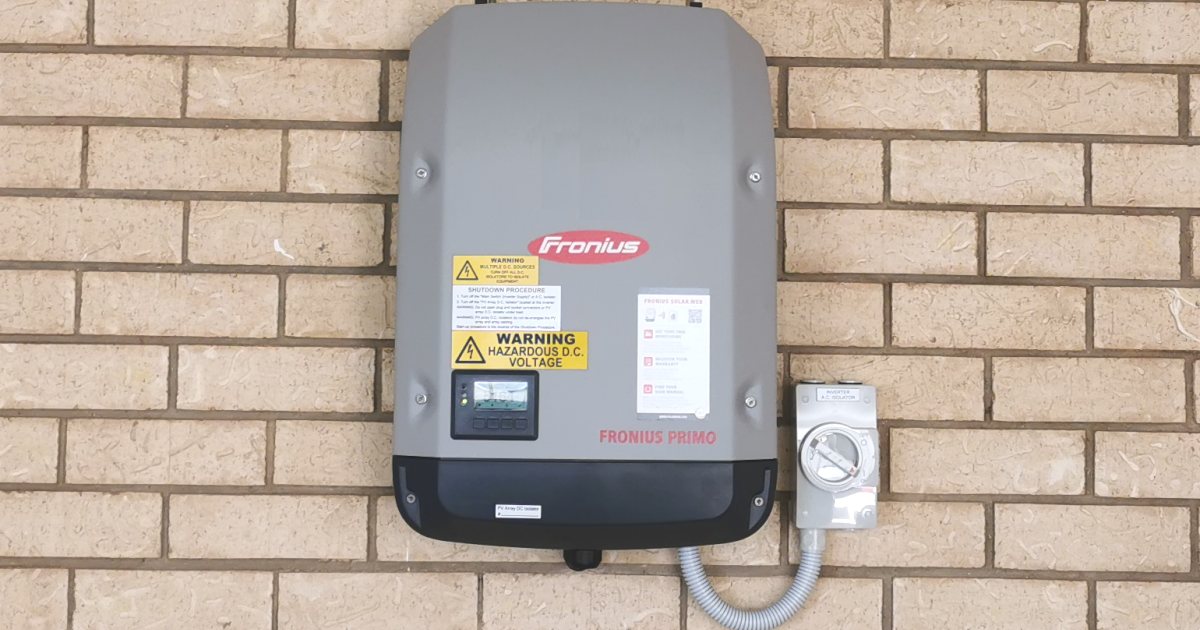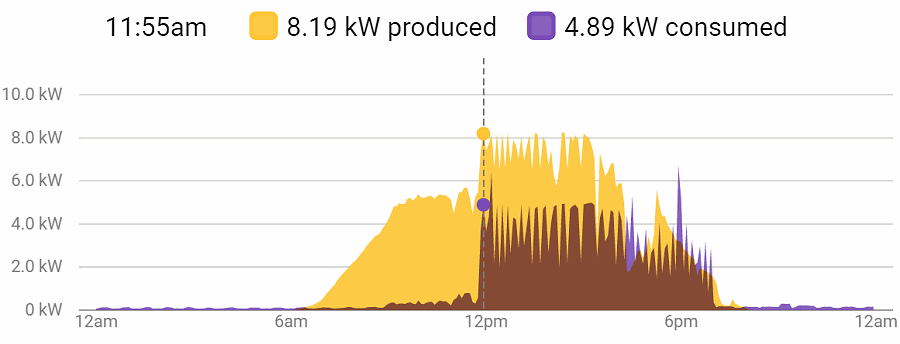
You may have come across the terminology “clipping” and “throttling” used in association with solar inverters. These terms have nothing to do with taking out frustrations on solar hardware; so what do they refer to? Here’s a quick explanation.
Just to set the scene to help illustrate, I have a 10kW solar system with an 8.2kW solar inverter. I don’t have a home battery yet. My Distributed Network Service Provider’s (DNSP’s) grid connection rules stipulate an export limit of 5kW for this system.
What Does This All Mean?
While I have 10kW of solar panels, the maximum usable power they’ll provide to our home is 8.2kW due to the inverter’s capacity. It’s very common, permissible and desirable to have greater solar panel capacity than inverter capacity. This is called oversizing, explained here.
So, my system is capable of producing 8.2kW. But if our house is using little electricity, the most surplus power it can send to the grid for a feed-in tariff is 5kW due to the export limit programmed into the hardware. This means the most usable power the system will produce is 5kW if no electrical appliances are being used in the house.
With that in mind:
Inverter Clipping
Inverter clipping occurs when an oversized solar panel array is generating more than the inverter capacity. The following is an example:

It’s not the best example given the generation and consumption conditions that day, but you can see several instances where the inverter has briefly hit its maximum capacity. Power utilised in the house at the point highlighted was 4.89kW, with ~3.3kW exported to the grid = 8.2kW. You’ll see inverter clipping happening more regularly in households with smaller capacity oversized systems and/or higher daytime energy use.
Properly oversized systems will not wreck an inverter or greatly shorten its service life, but it will make better use of it – and little yield is lost overall.
Inverter Throttling
Inverter throttling occurs when the DNSP-imposed export limit is reached. As mentioned, this limit is programmed into the solar inverter (or inverter smart meter). The following is a decent example of sustained inverter throttling.

We weren’t using much electricity in the house for much of the day. Even though the inverter is capable of 8kW, the maximum usable power being generated at the point highlighted in the graph was 5.12kW; 190 watts used in the house and (nearly) 5kW being exported at the time.
If you’re wondering how the graphs are generated, they are slightly butchered versions produced by Solar Analytics; an advanced solar monitoring product. Almost all modern inverters include features to monitor solar production remotely, but most won’t show energy consumption. For that, you need extra hardware and software.
Advanced monitoring is an optional extra. It’s well worth spending a few hundred dollars more if you’re considering going solar to get the full picture of your household’s power/energy production and consumption; along with several other benefits.
Learn more about the benefits of advanced solar monitoring.

 RSS - Posts
RSS - Posts



I have a 5kw Sungrow single Phase system with Trina solar panels. Iam thinking of adding AC coupling . What would be the best economically brand for AC coupling. and does this tie back tthe same wave form as A phase on the sungrow system. And what size should I put on. House is 3 phase but the meter is set up for feedback compensation
Regards Paul
Hi I have a 10kw panel with 10kw inverter, my house is 3 phase so the limited export is 15Kw, but my Maximum generate is flat out at 5.65Kw on a sunny day, it never reach higher than that. Do you think of a problem? Because it not reach my export limited and it only 57% of the inverter capacity
Hi Kiana, unless there are shading issues, it should do more than 5.65 kW. Have you spoken with your installer about it?